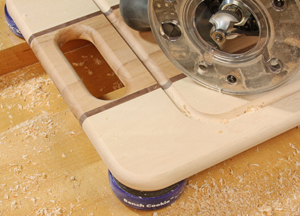
After making four cutting boards to fit on a small workbench, three have no problems. The fourth has developed splits along the glue lines in several joints. The wood was hard maple and was well dried and jointed. They were sent to various parts of the country — i.e., Maryland, Wisconsin and Colorado (considering the moisture in various areas.) The one in Colorado is the problem. What did I do wrong? How can I prevent it in future projects? – Jim Janowiak
Chris Marshall: Your question couldn’t be more timely with this issue’s Industry Interview on Wagner Meters. As Ron Smith suggests, it all comes down to equilibrium moisture content. The wood is going to adjust its internal moisture content to match the relative humidity of where it will be “living.” Wetter where you are, and drier where it’s going, means the wood is going to shrink. And, the amount of shrinkage is greater across the face than through the thickness. Put these variables together, and add in the variety of ways we assemble our projects with glue, and glue joints sometimes take the hit. Glad to hear those other cutting boards are behaving better. So it goes with wood!
Tim Inman: I think you’ve actually answered your own question. It is almost certainly a local moisture problem. Colorado has been on fire this summer. Hot and dry are conditions often experienced there. So, I’m betting your hard maple (which is subject to more radical movement due to its density) is just drying out and shrinking. Did you put a “breadboard” cleat on the ends? That will almost guarantee split joints and warping.





